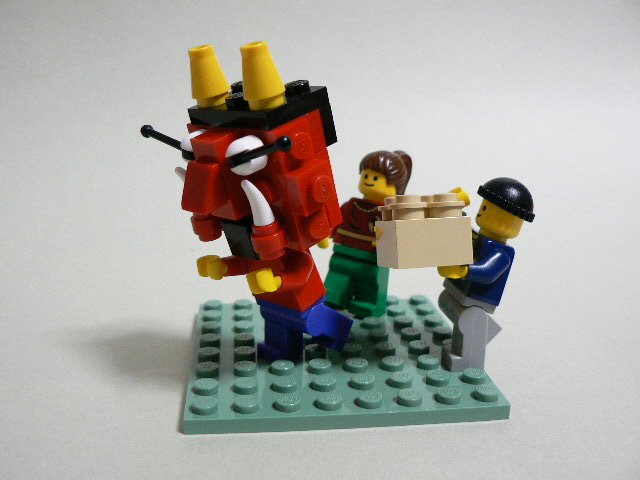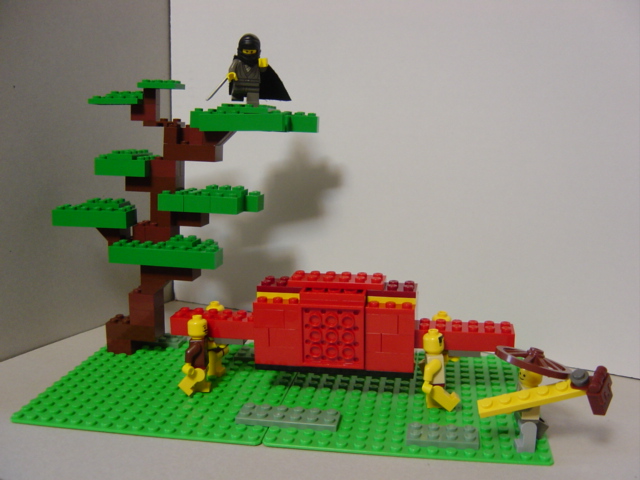Today we’ll wrap up translations of Izzo’s series of Japanese proverb vignettes. I’ve said before that he’s presenting them in hiragana order, which means he created a LEGO vignette for each kana character in the Japanese syllabic alphabet. Some of you may be expecting 50 vignettes, but there are only 44. Let’s have one last Japanese lesson to explain why.
The Japanese alphabet, or Gojuon, is represented in two scripts (or kana), hiragana and katakana. Goju means “fifty,” and on means sound, implying that there are fifty kana in the Gojuon. Children memorize the Gojuon in tables. There are ten columns of five kana each. The first column contains the vowels; the next nine contain consonants combined with those vowels (plus an N sound in its own eleventh column that nobody counts). However, the “Ya” column includes two duplicate vowels, and the “Wa” column includes another duplicate vowel, two archaic kana (unused in modern writing), and the vowel “Wo” that never begins a word. Thus 44 instead of 50.
(Now combine hiragana with their corresponding katakana forms, Latin letters and numbers, and nearly 2,000 Kanji characters derived from Chinese — each with multiple possible readings depending on context, and you get an idea of how complex the Japanese written language is.)
Now, on to the final batch of Izzo’s vignettes:
Japanese: The seed of pleasure is pain; the seed of pain is pleasure.
English: No pain, no gain.

Japanese: A flower in each hand.
English: Have one’s bread buttered on both sides.

Japanese/English: Like attracts like.

Japanese/English: There’s an exception to every rule.

Japanese: Evidence instead of discourse.
English: The proof of the pudding is in the eating.

Japanese/English: Fortune enters by a merry gate.

The Brothers Brick is funded by our readers and the community. Articles may include affiliate links, and when you purchase products from those links, TBB may earn a commission that helps support the site.































